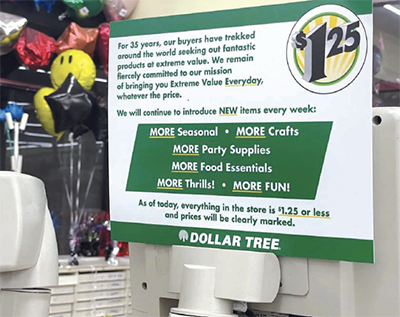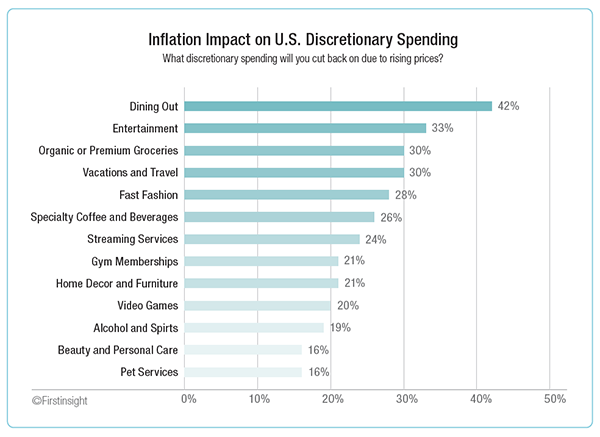Economic downturn and inflation: tips for beauty supplies
U.S. national average for gas price surpassed the $5.00 mark for the first time. All essential consumer goods are uncontrollably getting expensive, making the consumer’s buying power weak in the midst of drying government stimulus funds. America is experiencing the most serious inflation in 40 years.
Drastically increased cost in contrast to lowered profit margin is making the beauty supply owner’s worry. As the market is quickly shifting, beauty supplies can survive in the long run by responding and preparing for newer trends. We have researched what can be done in the time of crisis.
1. Understand the consumption pattern change of your customers and focus on the main products.
Walmart, the biggest retailer in the U.S., has increased the shelf space for half-gallon milk products. As the inflation hits hard on consumers, many customers have expressed their hesitation for buying a full gallon of milk, which has been traditionally the best-selling size. Michaels, a craft store chain, cut the marketing budget for luxury items, and Amazon, an online retail titan, focused on essential consumer goods during this year’s Prime Day promotion. As such, inflation is demanding companies to make changes and act.
In the early days of the pandemic, the supply chain issues caused consistently low stock of consumer goods, but now it is heading in the other direction. Supply chain issues have been mitigated, and goods are arriving early at retail warehouses. Many big retailers are offering discounts and clearance to clear out the inventory.
Beauty supplies must quickly respond to a change of consumption pattern in order to prevent overstocking. Why don’t you list the essential items in your store?
Retail owners say, “customers have changed!”
A Beauty Supply: “Spending is dwindling, and more people look for DIY products over items designed for professionals.”
Before the inflation, many customers bought 5-6 bundles of 3-piece braids and 2-3 packs of 6-piece while nowadays they just buy one or two packs. It is also notable that many customers want to get items designed for at-home application. If you go to a hair salon for braiding, it costs at least $100 plus tip. Crotchets are particularly selling well. Chemicals are moving slower. It used to be 2-3 weeks of busy season around holidays and year end, but now it’s 2-3 days. We are certainly having a time where everyone has a shallow pocket.
2. Smart way to deal with price increase
Many retail store owners are simply hoping that customers will understand price increases due to inflation. Price increase is seemingly the best way to deal with inflation, but repeated price hikes in response to increase in cost can lead to consumer complaints.
When you increase price, you should start with items that are sensitive to margins and major items that customers are willing to pay a bit more and in small increments. At the same time, you should notify customers of future price increases in order to make sure you have enough cushion for profit margin during the inflation. Also, you should show gratitude to customers for the long run success of your business. In a tough time for everyone, having a good relationship with customers is important.

Dollar Tree increased the price of most items from $1 to $1.25
Sales associates say, “some stores thrive in a tough time because…”
Revisiting the procuring cost of the past and present and procuring trending items before it’s too late are the keys. All successful stores always do those. When the supply issues and increase of transportation cost impacts procuring cost, you will lose customers’ interest and have shrinking profit margin if you keep the price tags and the selections of goods intact. Items sold well last year will not sell this year. Trend is everything in this market. Big retail stores have teams to deal with these issues and buy in bulk to reduce procuring cost. They can better keep up with newer products. In small retail stores, it seems making changes and trying new things work for them.
3. Reviewing margin and where to save cost
Many retail store owners calculate margin when they put the first price tag and simply maintain it. In a changing market, you should regularly review the price for sustainable profit. For times of high inflation, it is recommended to have quarterly review of product margin. You should act before you are encountering cash flow problem due to low margins. If your cost and procurement cost have spiked, you should go over options to save money. You can change suppliers to cut down cost, or you can consider buying in more quantities if cash flow is good.
Cost saving tips by retail store owners
You can take advantage of collective buying if you are a member of a beauty supply association. Purchase in large quantities can tie up your cash flow, so retail store owners hesitate. There are not many fixed costs that can be cut down. The easiest way is to reduce labor cost, but the labor shortage and increase in hourly pay are making it tough.
4. Do not become “The Giving Tree” without financial strategy
Some retail store owners hesitate to transfer the cost increase to customers. You can simply swallow the reduced margin for a smooth operation of business, but keeping price the same or even cutting cannot be a long run strategy. Without maintaining a proper level of profit, you cannot have enough resources to continue serving your customers.
Without good profit and cash flow, a business cannot thrive. It will eventually be bad for both customers and your business. Having a financial strategy for yourself, family, employees, and the local community is your responsibility as a business owner. Price hike can marginally impact individual customers while it plays a substantial role for the business overall.
Financial strategies will play an important role for surviving the inflation. If you want your beauty supply to continuously serve the community and customers, you should quickly adapt to the changed market situation.
Still, bright outlook for beauty supply
According to NPD, a data-based market research firm, the beauty industry grew 19% in the first quarter of this year, owing to the reopening of business. A slight uptick of spending on small indulgences during recession, called the lipstick effect, is ongoing, and many customers are indulging in affordable luxury to make themselves feel better in times of financial hardship. It’s a good sign for beauty supplies.

©Firstinsight
According to a survey by FIRSTINSIGHT, a market research firm, inflation hits hardest on restaurant and entertainment while the spending on beauty and pet services are mostly spared.